How many jobs are there in Professional, Scientific and Technical Services?
This spotlight provides similar information to the spotlight on the Manufacturing industry that was published in the March 2019 quarter release.
In the June 2019 quarter, more than 8% of all jobs in Australia were in the Professional, scientific and technical services industry.
The number of filled jobs (that is, jobs with a person in them) in seasonally adjusted terms in Professional, scientific and technical services has increased by around 215,600 jobs in the past five years from around 976,700 jobs in June 2014, to 1,192,300 in June 2019. Professional, scientific and technical services jobs have increased by 44,200 jobs in the past twelve months, and decreased by 5,400 jobs in the past quarter.
This increase over the past five years has seen the Professional, scientific and technical services industry remain the 4th highest employing industry of all the industries.
Of the 1,192,300 filled jobs in Professional, scientific and technical services in June 2019, there were 51,700 secondary jobs (that is, any job held by an employed person other than their main job), or 4.3% of total filled jobs in the industry.
The main source of data for this article is the Australian Labour Account, which provides a framework for bringing together and ‘balancing’ labour market data from different sources (including data from the Labour Force Survey, the Quarterly Business Indicators Survey, the Economic Activity Survey and the Survey of Employment and Earnings). All of these data sources show a general increase in Professional, scientific and technical services jobs over the long term. The green line in the below chart – the balanced Labour Account estimate – provides the best measure of the number of Professional, scientific and technical services jobs over time.
Graph 1: Professional, scientific and technical services filled jobs, original
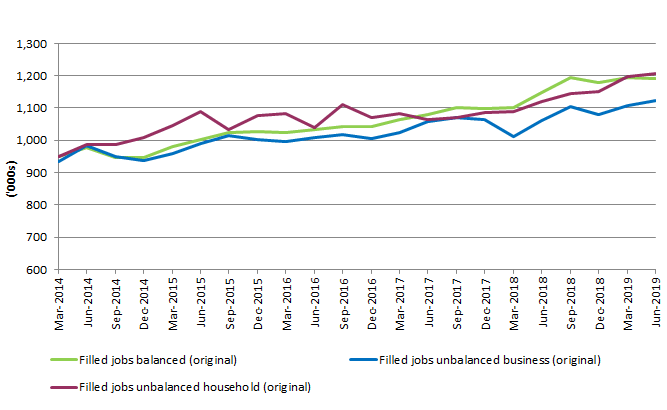
The number of employed people has continued to grow in the Professional, scientific and technical services industry, increasing from 964,600 in June 2014 to 1,178,300 in June 2019. Over the past five years, Professional, scientific and technical services has grown more quickly than most of the services industries in terms of employment (excluding the Health care and social assistance industry). The three industries with the highest growth rates within this group were Education and training (24.4%), Professional, scientific and technical services (22.2%) and Accommodation and food services (14.9%).
Graph 2: Annual percentage changes, employed persons, selected services industries, seasonally adjusted
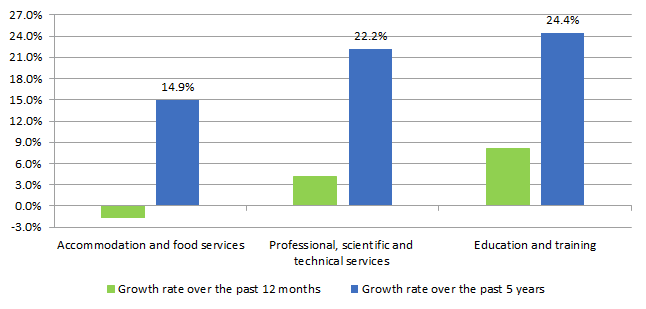
Of the 1,178,300 employed people in Professional, scientific and technical services in June 2019, there were 53,500 multiple job holders (that is, people holding more than one job) or 4.5% of employed persons in the industry (the rate of multiple job holding).
The annual Australian Labour Account shows the distribution of filled jobs across the subdivision industries within Professional, scientific and technical services. Professional, scientific and technical services (except computer design) accounted for the largest share of all filled jobs in the Professional, scientific and technical services industry over the past eight years.
Graph 3: Proportion of filled jobs by subdivision, Professional, scientific and technical services, 2010-11 to 2017-18
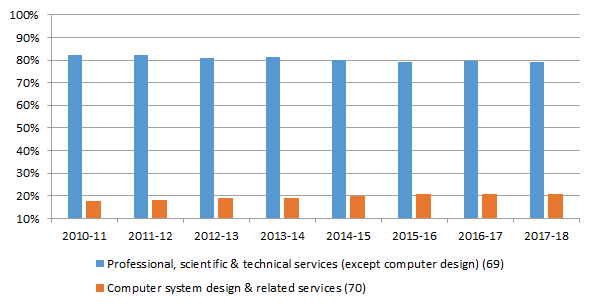
The Labour Account contains high quality hours worked data for the Professional, scientific and technical services industry, which is directly comparable with the best estimate of Professional, scientific and technical services jobs. Over the past five years Professional, scientific and technical services hours worked in all jobs have increased by 18.2%, and decreased by 1.1% in the past quarter.
The Labour Account also provides insights into the total labour income across each of the industries. Over the past five years, total compensation of employees increased by 25.4% and labour income from self-employment increased by 33.7%. In the most recent quarter, labour income from self-employment rose 3.7% to $3,685 million, while compensation of employees rose 0.8% to $23,859 million, underpinning an increase in total labour income for the Professional, scientific and technical services industry of 1.1%, to $27,544 million.
Graph 4: Professional, scientific and technical services payments, seasonally adjusted
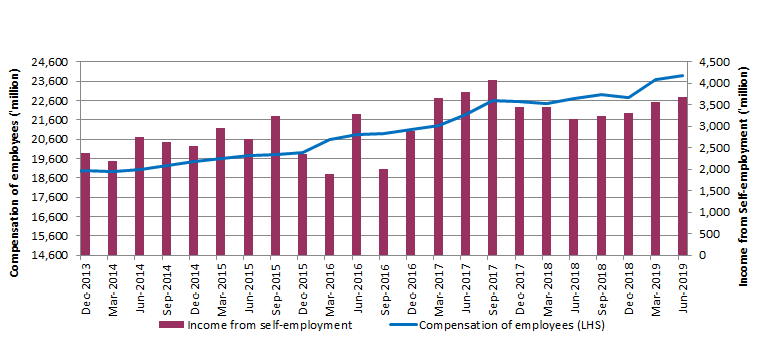
Recently published data from the Linked Employer Employee Dataset from Jobs in Australia (cat.no. 6160.0) showed people aged 30 -34 years had the largest proportion of employment in 2016-17 in the Professional, scientific and technical services industry. Data from this publication also saw an increase in employed persons aged 25-74. Males in this age group held a slightly higher proportion of jobs than females.
Graph 5: Age distribution in Professional, scientific and technical services by employed persons, 2011-12 and 2016-17
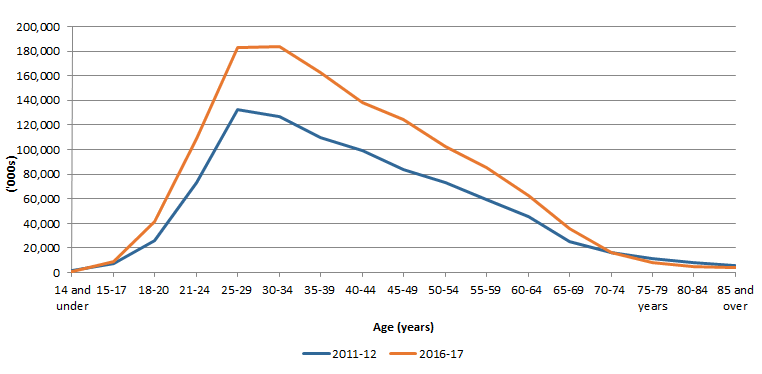
The Labour Account is the best source of headline information on employment by industry. It provides an estimate of the number of jobs, hours worked, and associated labour income. Its estimates are complemented by other industry information, from Labour Force Survey statistics and Jobs in Australia (cat. no. 6160.0), which provide insights into the characteristics and distribution of people and their jobs in the labour market.
 Print Page
Print Page
 Print All
Print All
 Quality Declaration
Quality Declaration